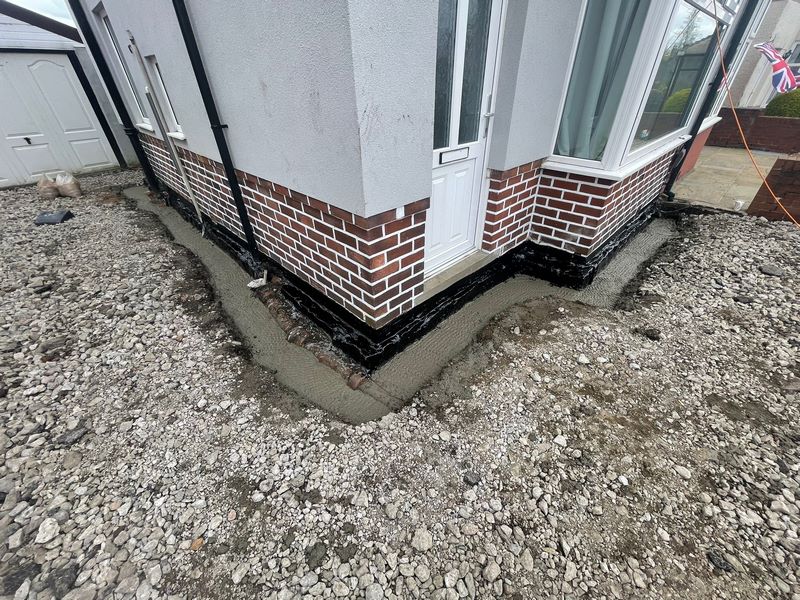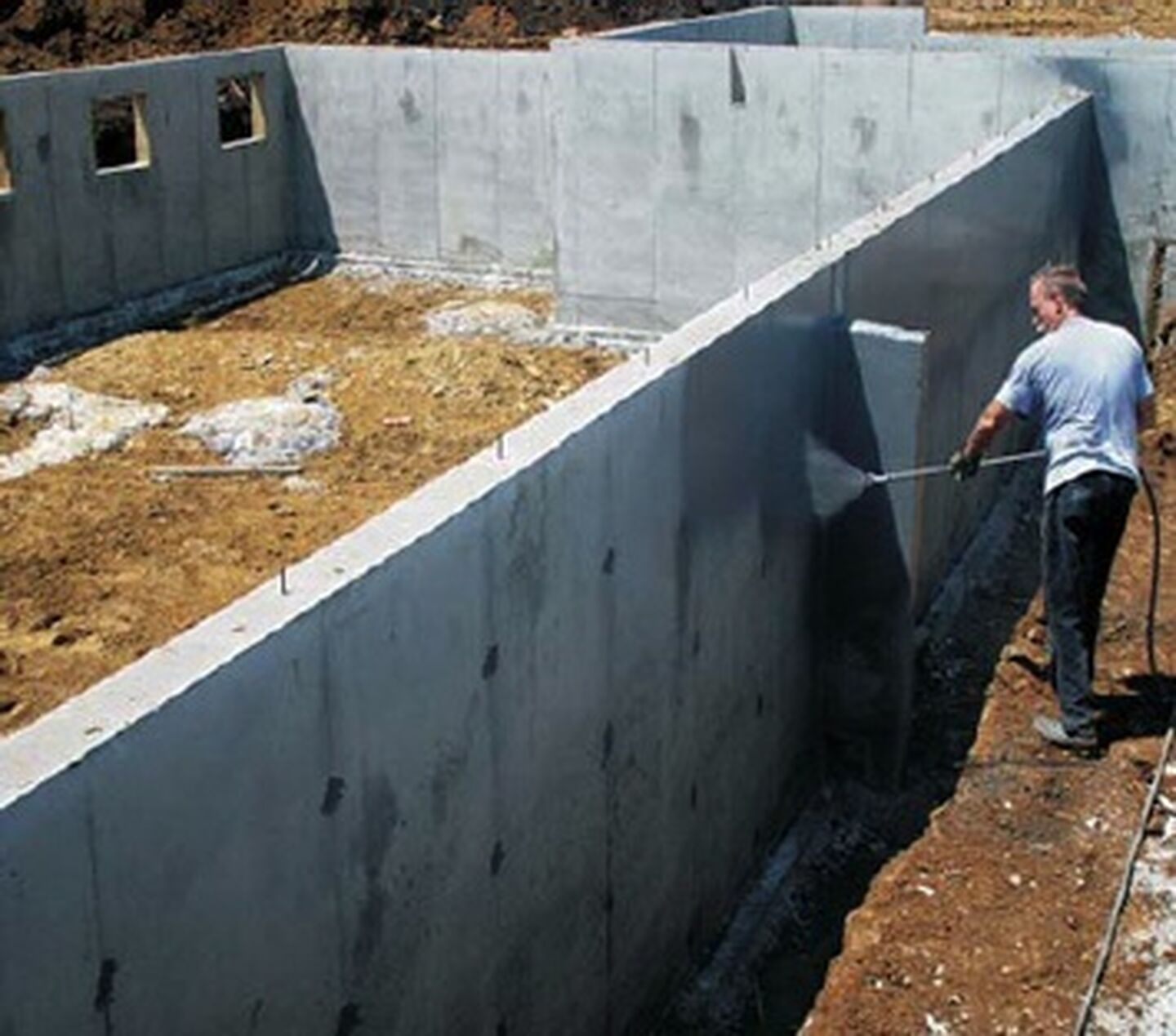Checking Out the Various Techniques and Solutions for Effective Damp Proofing
Moisture in buildings postures considerable challenges to both structural honesty and interior air top quality. Various methods and options have emerged to combat this pervasive concern. From traditional damp-proof membrane layers to cutting-edge chemical therapies, each approach offers distinct advantages. Comprehending these options is necessary for reliable wetness control. Nevertheless, choosing the right option depends upon particular structure problems and requirements, prompting more expedition right into one of the most efficient moist proofing methods readily available.
Understanding the Root Causes Of Moisture
Wetness can arise from different sources, recognizing these reasons is important for effective remediation. Frequently, dampness originates from three main resources: climbing moist, permeating wet, and condensation. Climbing wet happens when groundwater takes a trip upwards with permeable products, such as block or rock, commonly because of a lack of an effective barrier (mould removal newcastle). Permeating moist is commonly triggered by external variables, consisting of roof covering leakages, damaged rain gutters, or harmed wall surfaces, enabling water to penetrate a building. Condensation, on the other hand, results from excess wetness in the air, often aggravated by bad air flow and temperature distinctions, bring about water droplets basing on surfaces. Recognizing these underlying problems is crucial, as each sort of moisture requires a tailored technique for remediation. Proper evaluation helps in determining the most reliable options, ultimately safeguarding the structural integrity of a structure and boosting indoor air high quality
Traditional Damp-Proof Membranes

Chemical Damp-Proofing Solutions
Chemical damp-proofing solutions supply an innovative approach to stop wetness breach in structures. These methods normally involve the application of fluid chemicals that pass through stonework and form an obstacle versus increasing moist. Commonly used chemicals include silanes, siloxanes, and other water-repellent agents that respond with surface products to develop a hydrophobic layer.The application process usually calls for exploration holes right into the wall surfaces, injecting the chemical service, and permitting it to heal. This approach is particularly helpful for older structures where conventional damp-proof membrane layers may be not practical. Chemical damp-proofing can be much less disruptive and much more cost-effective than considerable restoration projects.While effective, these solutions depend on proper application and environmental problems for peak performance. damp removal newcastle. Routine maintenance and tracking are necessary to guarantee the longevity of the damp-proofing treatment. In general, chemical damp-proofing stands for a functional option for guarding buildings against moisture-related damages
Tooth Cavity Wall Construction Methods
Cavity wall construction techniques use countless benefits, particularly in moisture control and power efficiency. By integrating an air gap in between 2 layers of stonework, these wall surfaces efficiently mitigate water access while improving insulation. This mix not just secures structures from wetness but likewise adds to minimized energy intake.
Benefits of Tooth Cavity Wall Surfaces
When considering efficient wet proofing approaches, the benefits of dental caries walls stand out prominently. Cavity walls include two separate layers, creating an air space that efficiently decreases wetness infiltration. This design lessens the threat of wetness, as the outer wall surface functions as an obstacle versus rain and water ingress. Additionally, cavity wall surfaces improve thermal insulation, which adds to energy effectiveness by decreasing warmth loss. They additionally give audio insulation, assisting to develop a quieter indoor setting. The air void permits for air flow, which aids in dampness control and minimizes the probability of mold development. These benefits not only boost the total comfort of a structure but additionally add to its long life and structural stability.
Moisture Control Methods
Effective dampness control methods are essential in dental caries wall building and construction to assure long-term security versus dampness. One primary approach includes the incorporation of weep openings, which facilitate water drain from the tooth cavity, preventing build-up. Furthermore, the usage of breathable membrane layers can aid manage moisture degrees while allowing caught vapor to get away. Appropriate placement of insulation is also critical, as it must not obstruct drain courses. In addition, making certain that the external leaves of the tooth cavity wall are created with waterproof products enhances total resilience. Normal maintenance checks are important to identify any type of blockages or damages early, protecting the structure's honesty. Eventually, a combination of these strategies forms a robust defense versus dampness intrusion in dental caries walls.
Insulation and Energy Efficiency
Insulation plays a vital duty in enhancing energy performance within dental caries wall construction. By integrating shielding materials, these walls develop a thermal obstacle that lessens heat loss and lowers power intake. Efficient insulation not just assists maintain a steady interior temperature level yet also reduces the threat of moisture, as it avoids condensation within the wall dental caries. Various methods, such as the usage of rigid foam boards or mineral woollen, can be used to accomplish suitable insulation efficiency. In addition, correct setup is important to guarantee that gaps and spaces are minimized, which can otherwise endanger power effectiveness. Eventually, a well-insulated tooth cavity wall adds considerably to overall sustainability and reduces home heating and cooling prices for house owners.
Outside Damp Proofing Approaches
External moist proofing techniques are important for protecting structures from dampness seepage. Two reliable methods include the application of water resistant membranes and the setup of French drains. These options aid mitigate water build-up and protect the integrity of buildings.
Waterproof Membrane Application
While various methods exist for preventing dampness ingress, the application of waterproof membrane layers stays a very reliable exterior damp proofing method. These membrane layers are typically made from materials such as polyethylene, rubber, or changed asphalt, offering a durable barrier against water penetration. The setup procedure entails applying the membrane layer to the outside surface areas of structures or wall surfaces, making sure total coverage to stop leakages. Proper adhesion and sealing at joints are important to making best use of performance. Water-proof membranes can be applied in various forms, including fluid finishings and sheet membranes, permitting adaptability based upon the specific needs of the structure. This method not just secures structures from moisture but likewise boosts their longevity and structural stability.
French Drain Installation
One efficient method for taking care of groundwater and preventing wetness accumulation around a building's structure is the installment of a French drain. This water drainage system includes a trench loaded with gravel and a perforated pipe that reroutes surface area water far from the foundation. Appropriate installation needs cautious planning, ensuring that the drainpipe slopes far from the framework to assist in optimal water circulation. In addition, the location of the drainpipe is vital; it needs to be positioned in locations susceptible to merging or excess moisture. Regular maintenance, including cleaning debris from the crushed rock and guaranteeing the pipeline continues to be unhampered, is vital for long-term performance. Ultimately, a well-installed French drainpipe can significantly minimize the danger of water-related problems in structures and cellars.
Interior Waterproofing Techniques
Inside waterproofing methods are vital for protecting a structure's inside from wetness seepage and possible water damages. These techniques generally involve the application of specific products and techniques developed to produce a moisture barrier within the structure. One common strategy is making use of waterproof finishes or sealants on walls and floorings, which avoid wetness from passing through surfaces.Additionally, mounting interior drainage systems, such as sump pumps, can properly take care of water build-up in basements and crawl rooms. An additional method includes the use of vapor barriers, which are installed to inhibit dampness motion from the ground into living spaces.Moreover, resolving any kind of splits or gaps in wall surfaces or structures with appropriate sealers ensures a complete defense versus water intrusion. By applying these indoor waterproofing approaches, building proprietors can greatly lower the risk of mold and mildew development, structural damages, and other moisture-related problems. Appropriate implementation of these techniques is important for long-term protection and building stability.
Normal Maintenance and Examination Practices
Normal upkeep and inspection practices are vital for guaranteeing the long-term performance of wet proofing solutions in any building. Regular checks enable homeowner to determine very early indications of moisture breach, such as peeling off paint, mold development, and musty odors. These signs can indicate underlying issues that require immediate attention.Inspections need to be conducted a minimum of every year, concentrating on susceptible areas like basements, creep areas, and exterior walls. During these analyses, property proprietors should analyze sealers, water drainage systems, and ventilation to verify they function correctly.Additionally, maintaining read more downspouts and rain gutters is important, as clogged systems can lead to water accumulation near the foundation. Implementing a regular maintenance schedule, in addition to timely repairs, can substantially prolong the lifespan of damp proofing procedures and secure the architectural honesty of the building. Positive steps ultimately contribute to the overall health and wellness of the living environment.
Frequently Asked Inquiries
Just How Lengthy Does Damp Proofing Typically Last?
The period of damp proofing efficiency varies, typically lasting in between 20 to half a century. Aspects such as application high quality, environmental conditions, and upkeep techniques significantly affect the durability of the wet proofing therapy.

Can I Damp Evidence My Home Myself?
The individual contemplated the feasibility of do it yourself damp proofing. With correct research and the best products, it is feasible. Nonetheless, they likewise identified the value of expert support to guarantee resilient effectiveness and protect against future concerns.
What Are the Indicators of Ineffective Damp Proofing?
Indicators of inefficient damp proofing include persistent mildewy smells, visible mold development, peeling off paint, damp patches on walls, and timber decay - damp specialist newcastle. Homeowners should attend to these problems promptly to stop more damage and health issues
Does Damp Proofing Affect Indoor Air High Quality?

How Much Does Expert Damp Proofing Expense?
Expert moist proofing expenses vary considerably, normally ranging from $1,000 to $5,000 relying on the property's dimension, the level of the damp concern, and selected approaches. Each circumstance needs a tailored evaluation for accurate rates. Generally, wetness originates from 3 key sources: climbing moist, passing through wet, and condensation. When taking into consideration reliable moist proofing methods, the advantages of dental caries walls stand out plainly. Outside damp proofing methods are vital for securing frameworks from moisture infiltration. While numerous techniques exist for avoiding wetness access, the application of waterproof membranes stays an extremely reliable outside moist proofing strategy. Signs of inefficient wet proofing consist of persistent mildewy odors, visible mold growth, peeling off paint, moist patches on walls, and wood degeneration.
Comments on “Landlord's checklist to damp proofing newcastle solutions”